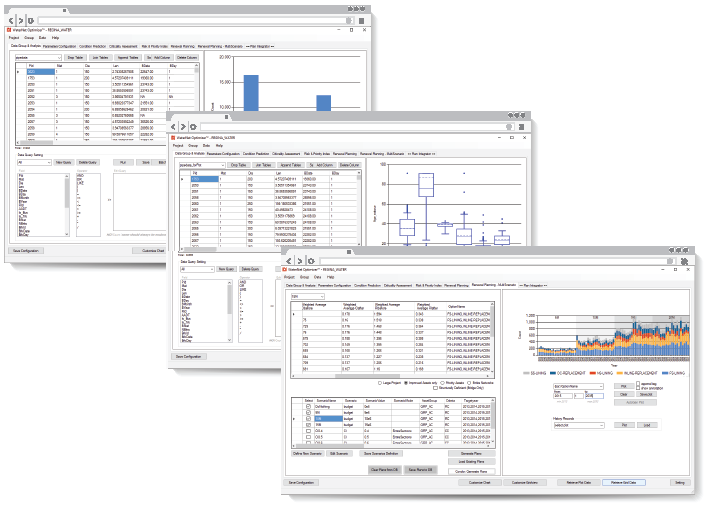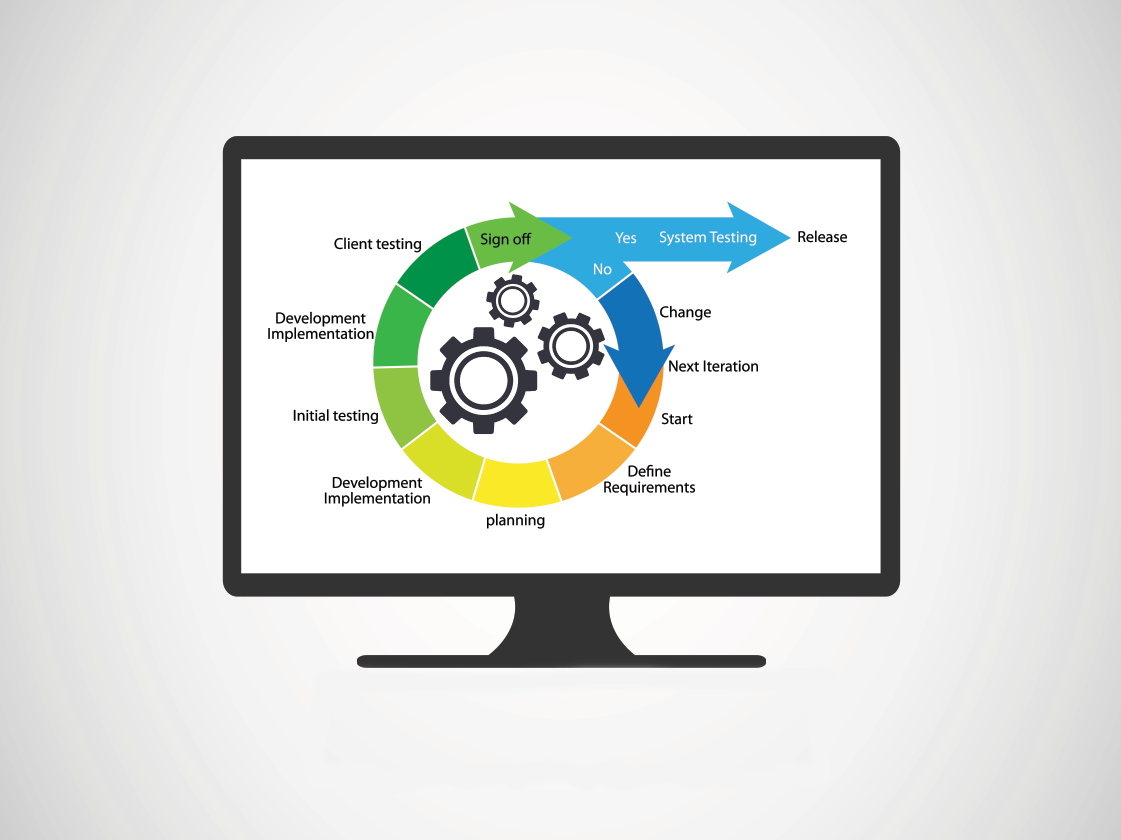WaterNet Optimizer™ implements the industry’s most advanced algorithms to support optimal renewal planning of water distribution networks to achieve maximum return on investment in terms of improving network-wide condition and reducing the risk of pipe breaks. The algorithms include inductive multi-variate deterioration modeling, risk assessment and prioritization, and multi-objective optimization. WaterNet Optimizer™ offers a rich set of features unparalleled by any other software in the market today.

Optimal Long-Term Renewal Planning
WaterNet Optimizer™ allows users to investigate a range of network-level renewal planning scenarios to evaluate impact of funding levels on network condition and risk levels, and to evaluate funding requirements to achieve desired condition or risk objectives. Asset managers can define scenario parameters such as planning horizon, funding profile, budget splitting among renewal methods, annual inflation rate, etc. For each defined scenario, the software generates optimal and feasible project lists, on an annual basis, where selected projects and are guaranteed to be optimal and to satisfy all defined constraints. Trade-off analysis functions (e.g., queries, charting functions, etc.) will enable asset managers to quantitatively assess the consequences of various scenarios and policies on the condition and risk levels of the water network. This analysis will help engineers make rational and evidence-based decisions to determine the most cost-effective long-term renewal plan.


Accurate Prediction of Probability of Pipe Break
WaterNet Optimizer™ implements a revolutionary multi-variate inductive algorithm to accurately predict pipe deterioration and probability of break by correlating a range of physical and performance variables (e.g., age, diameter, material, depth, soil type, traffic loading, etc.) with pipe’s break rate. Unlike other statistical approaches such as regression, Markov chain, or cohort survival modeling, which assume that the deterioration process follows a “known” distribution function, our algorithm does not assume any “prior” knowledge of the deterioration function. Instead, it analyzes historical break data and correlates a range of independent physical and operational variables (e.g., age, diameter, material, depth, soil type, traffic loading, etc.) with pipes break rate to automatically “discover” the distribution function that most closely captures the relationship between these variables and pipes probability of break.


Risk-based Prioritization
Unlike the commonly used condition-based (or worst-first) approach, WaterNet Optimizer™ implements a risk-based prioritization model that balances the need to address pipe condition (or likelihood of break) and the consequence of break (or criticality). For each pipe, a “risk index” is calculated as the product of the consequence of break and the probability of break. Consequence of pipe break is determined by evaluating a set of rules and weights that involve static or time-dependent risk factors (e.g., pipe diameter and location, hydraulic criticality, structural vulnerability due to traffic loading, and soil characteristics). Calculated risk indices are then used to prioritize sewers to reflect urgency of renewal actions.


Customizable Renewal Methods Database
WaterNet Optimizer™ maintains a comprehensive built-in database of water main renewal technologies, including open-cut replacement, trenchless replacement (e.g., pipe bursting, horizontal directional drilling, micro-tunneling), and trenchless lining methods. The database defines a set of customizable constraints and formulae for calculating costs and benefits, as well as to determine applicability criteria of each method. Applicability criteria can include information on pipe material, diameter, soil type, and other user-defined criteria. Users can customize the database to reflect utility-specific policy constraints and best practices.


Advanced Data Analytics
WaterNet Optimizer™ maintains a centralized enterprise database to integrate water network data including inventory and geospatial data, break history and condition data, hydraulic model data, and renewal planning data. The software offers data management services, and supports import/export functions from/to virtually all commonly used file formats. It also implements advanced analytics functions to allow easy query and manipulation of the data using a user-friendly Query Builder. Pipe groups can be easily created, stored, and analyzed. Users can use a wide range of charting functions (boxplots, scatter plots, histograms, and pie charts) to efficiently investigate data trends and relationships. Queries and charts can be created for individual pipes, pipe groups, or the entire network. Average break rate and historical data trends can be identified using linear, polynomial, or exponential curve fitting functions.


Customizable
WaterNet Optimizer™ can be easily customized to reflect utility-specific data, renewal policies, planning constraints and scenarios, and forms of required presentations and reporting. It can seamlessly integrate and share data with most commonly used software including ArcGIS, work management systems (e.g., CityWorks), and hydraulic modeling software (e.g., EPANET).





